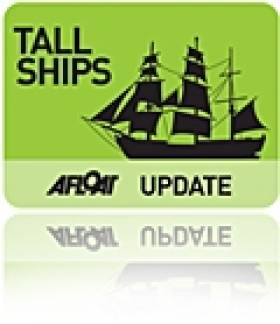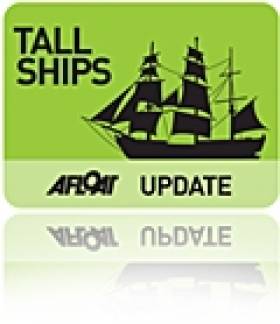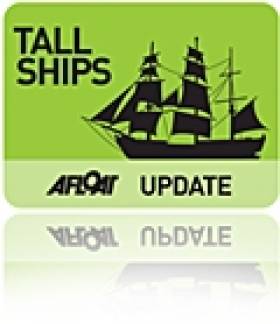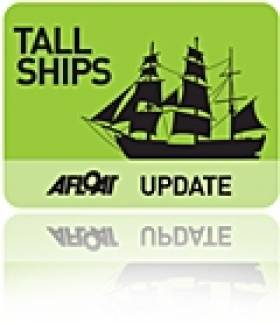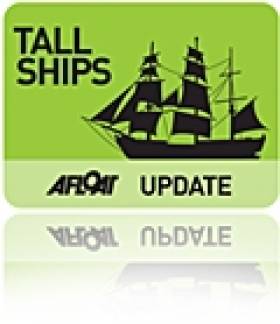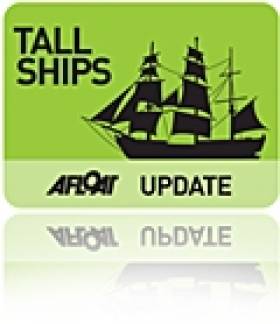Displaying items by tag: Tall Ships
The yacht once owned by the late former Taoiseach Charles Haughey will be only Irish entrant in the Tall Ships Races at Waterford later this month.
The Irish Times reports that Celtic Mist will take part in the first leg of the race to Greenock in Scotland before it is fitted out for its new life as a research vessel for the Irish Whale and Dolphin Group.
The IWDG's Simon Berrow confirmed that it has accepted the Haughey family's offer of the yacht as a gift to support its study and conservation of whales, dolphins and porpoise in Irish waters.
He said the group first had to explore the feasibility of running such a large vessel before it could accept the "very generous offer".
The Irish Times has more on the story HERE.
Black Diamond Ready for Success at Tall Ships Races
The Hartlepool Mail reports on one skipper who's making final repairs to his vessel ahead of the Tall Ships Races in Waterford this month.
Calvin Whitehead, captain of the 45ft Black Diamond, will set sail next Monday from Hartlepool with a crew of nine young people who will have the chance to gain valuable sailing experience.
The 29-year-old is hoping to repeat the class C ship's results in last year's race, where it finished second in its category.
"The boat is in good nick and the crew has mostly sailed before. We have a pretty good chance this year," he said.
The Tall Ships Races kick off in Waterford from 30 June to 3 July before the fleet sets sail for the Shetland Islands, then Stavanger in Norway and finally Halmstad, Sweden in August.
Places on Offer on Tall Ship Lord Nelson
The Lord Nelson Tall Ship is still looking for enthusiastic participants to join the EU Exchange programme from 30 July to 12 august this summer. The Lord Nelson is a special vessel. It is designed in a way that people with different disabilities can join an adventure on a Tall Ship.
So who can join? Everybody, as no prior sailing experience needed! And whether you are in a wheelchair or you're blind, on the Lord Nelson this is no issue. The experienced crew will teach you everything you need to know in order to sail a Tall Ship.
More details on the Afloat forum post here
Collaboration with other sail training bodies to establish a regular Tall Ships festival in Ireland is one of the long term goals of Sail Training Ireland's new youth development manager.
As previously reported on Afloat.ie, Michael Byrne took up the new post at Dublin Port last week. His first tasks include fundraising, planning structures for membership, administering bursaries for sail training experience and preparing for the Tall Ships visit to Waterford next month.
But he has also signalled his intent in the long term to "co-operate and engage with other sail training associations and organisations with the view to establishhing a recurring STI-endorsed Tall Ships maritime festival every three-to-five years."
Byrne also hopes to sponsor and support sail trainees on boats around the world to give them invaluable experience at sea.
For more information visit www.irishsailtraining.com.
Manager Appointed for New Tall Ship Training Body
Tall Ship sailing latest: When Sail Training Ireland for Youth Development was formally launched in mid-April to take on the mantle of Coiste an Asgard while making itself a more accessible body which can sign up individual and corporate members, chairman Sheila Tyrrell announced that a process was already under way to appoint a manager who would work from an office in Dublin Port headquarters writes WM Nixon.
The appointment was made within the planned time frame, and today (Thursday May 19th) manager Michael Byrne set up STI's base in the Dublin Port offices. He started his own sailing while still very young on Blessington Lake in the Wicklow Hills, and comes to the job complete with a degree in Outdoor Education.
His initiation period will include spending a familiarisation period at Sail Training International, the recognized world authority, at their offices in Gosport in England. In Ireland, his first tasks will include the planning of structures for membership, fund-raising, and the administration of bursaries for sail training experience which have become possible through grants from Sail Training International, and also from the shipping companies and port authorities which have already shown their enthusiastic support for this initiative. Details at www.irishsailtraining.com.
US Cutter Eagle On Its Way to Waterford
The US Coast Guard cutter Tall Ship Eagle has set sail on its 75th anniversary voyage to Europe - with Ireland being its first port of call.
Captain Eric C Jones, who pilots the US Coast Guard's training vessel and goodwill ambassador, said the trip was a special one for him and the more than 140 cadets on board, as it will be revisiting the shipyard in Hanover, Germany where it was built in 1936.
Other stops include London, Reykjavik, and Halifax in Nova Scotia before a final stop in New York on 5 August, according to The Day.
Dignitaries and residents from the Eagle's home port of New London, Connecticut will be heading to Waterford - host of the Tall Ships Races this summer - to welcome its arrival in 27 May.
Watch some video of the Eagle in action:
Colm Newport is Afloat's Sailor of the Month for April
Colm Newport was the Master of the sail training brigantine Asgard II when she started taking in water from an unexplained leak in the small hours of September 11th 2008 off the coast of France.
Like all Asgard's commanders during the ship's remarkable 27 year career which took her all over the world, he had a special affection for Asgard II, a small square rigger which punched way above her weight in the company of the world's largest tall ships.
But this was no occasion for sentimentality, and the sadness could wait until later. In a seamanlike manner, Newport analysed the reality of the situation, and calmly ensured that his full-rime crew and the ship's complement of young trainees clearly realized that the order to take up stations to abandon ship was for real – it wasn't simply an unexpected safety drill.
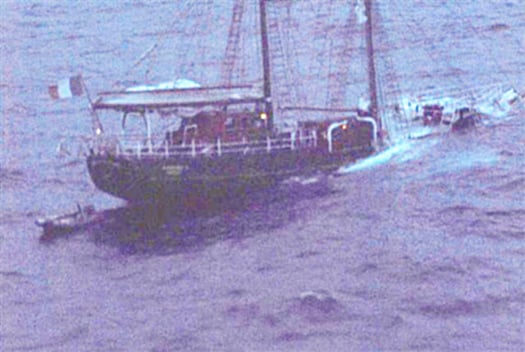
Asgard II sinks by the bow on September 11 2008 off the coast of France. Photo: Courtesy French Search and Rescue Service
To the credit of all on board, the transfer to the liferafts took place in a calm atmosphere, and as the beloved ship's final hour afloat arrived, Captain Newport gave the order to move away from the vicinity of the vessel to avoid any danger of the liferafts being dragged down by the rigging.
No-one was injured, few had any time even to be frightened, and thanks to the captain and crew's professional skill, the horror of drownings to wipe out Ireland's sail training programme was avoided.
Asgard II being a government-owned ship, the follow-through was inevitably slow. And as the national economic crash was getting up its full head of steam, the priorities of a national sail training programme open to all young people slipped right down the scale, until the Department of Defence quietly wound up Coiste an Asgard, and the insurance money for the ship went into the rapidly shrinking national coffers.
But the spirit lives on, and the newly established Sail Training Ireland – a voluntary body open to membership and all sorts of support – has been set up by several who were involved in Coiste an Asgard. It is officially recognized as the successor to the Asgard programme, and is already strengthened with bursaries from the global body Sail Training International.
In time, we may have a new square rigger, and she really will be the people's ship. But the fact that it can be anticipated with hope and enthusiasm is in large part due to the calm efficiency of Colm Newport and his crew on the morning of September 11th 2008.
Latest Asgard II Stories
Latest Tall Ships News from Ireland
Sail Training Ireland Assumes Mantle of Asgard
Writing in the Irish Independent on Saturday, WM Nixon welcomes the introduction of Sail Training Ireland as a big step towards getting Ireland back into tall ship sailing.
Nixon also pays tribute to Ireland's previous square-rigger, Asgard II, which held its own among taller competitors for almost three decades before its sinking in the Bay of Biscay in 2008.
That ship was also remarkable for being "one of the very few government owned and run sail training ships in the world".
In the wake of Asgard II, a new approach is being taken with Sail Training Ireland - which is an officially recognised voluntary trust, actively supported by the Irish Sailing Association, that is open to anyone and free to accept donations and corporate endowments.
"The sailing community and all those interested in promoting maritime affairs now have an opportunity for self-reliance," writes Nixon, who notes that while we get back on the road to having our own tall ship, Sail Training Ireland will be able to place Irish trainees on other ships already sailing for invaluable experience.
Asgard II's wheel and bell look like new again following their recovery from the sunken Irish sail training brigantine. Unlike 2005, Asgard won't be sailing in this year's Tall Ships race when it calls to Waterford but one suggestion doing the rounds is that the shiny bell should sound the start of the race from Waterford on July 3. It's a nice idea, certainly a lot nicer than rotting on the French seabed or sitting on a shelf in the Office of the Receiver of Wrecks. Let us know what you think in our poll on the left hand column.
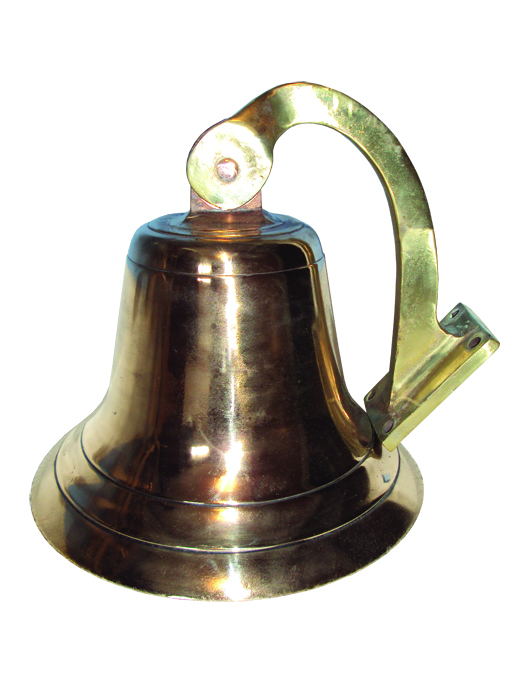
Back from the deep: Asgard II's bell (above) and wheel look like new again. Should they have a place at the Tall Ships Waterford, vote in our reader poll!
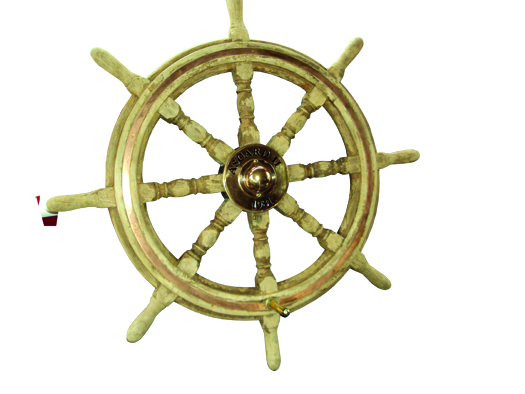
€10,000 Tall Ships Bursary for Irish Sailing Trainees
A new sailing body that claims it will ensure the continuation of the long standing Irish Tall Ships maritime tradition of youth sail training was launched at a ceremony in Dublin Port this afternoon.
The newly established Sail Training Ireland for Youth Development (STIYD) was officially launched by Nigel Rowe, President and Chairman of Sail Training International.Following the sinking of the Asgard II and the decision to wind up Coiste An Asgard, the future of sail training in Ireland had been uncertain but STIYD will now ensure the continuation of the long standing Irish maritime tradition. More Asgard II News.
At the launch Nigel Rowe also announced that Sail Training International had awarded STIYD with a bursary of €10,000 to help fund the participation of young Irish trainees in The Tall Ships Races 2011. Mr. Rowe remarked "It is wonderful to see Sail Training Ireland for Youth Development emerge from all the uncertainties and anxieties that followed the demise of Coiste an Asgard. The commitment and enthusiasm of the people who have made this happen will ensure its success, and they will have the full support of the international sail training community. With Waterford as a host port for this year's Tall Ships Races we have already committed more than €10,000 to help fund the participation of young Irish trainees."
The aims and objectives of Sail Training Ireland are to promote the development and education of young men and women through the Sail Training experience regardless of nationality, culture, religion, gender or social background as well as to sponsor and support sea-going trainees. Sheila Tyrrell, Chair of the steering group, who has a long history with sail training and in particular the Asgard remarked "We are delighted that we are in a position to formally launch the association, we are now taking applications for bursaries to allow young people to participate in the Tall Ships Race visiting Waterford later this year, and are also recruiting a manager to help manage the affairs of the association."
Also in attendance at the launch was Mr. Clayton Love Jnr., founding member of Coiste An Asgard and former President of the ISA. During the afternoons formalities Mr. Love Jnr. was officially awarded Honorary membership of STIYD in recognition of his outstanding contribution to sail training in Ireland.
Sail Training Ireland is also seeking to appoint a part-time manager to help with the development of a business plan and the day to day running of the organisations affairs. Further information on the position and a full job description can be found on the STI website www.irishsailtraining.com. Closing date for applications is Friday 22nd April.
The launch, sponsored by Arklow Shipping, was hosted by Dublin Port who are one of a number of ports supportive of the project.
All the latest Tall Ships News from Ireland.
Back from the deep. Should Asgard's bell ring out in Waterford? You decide. Poll.




























